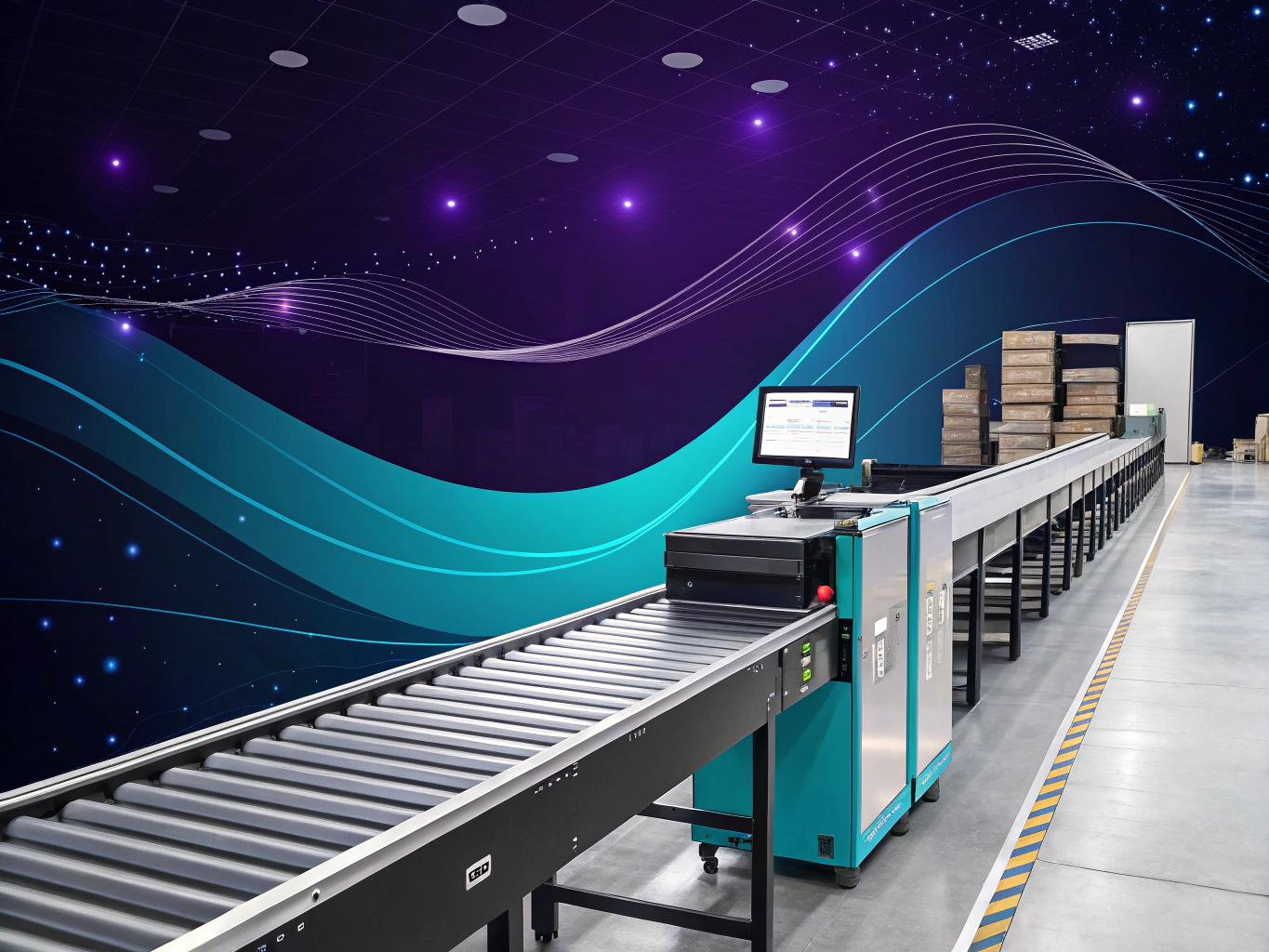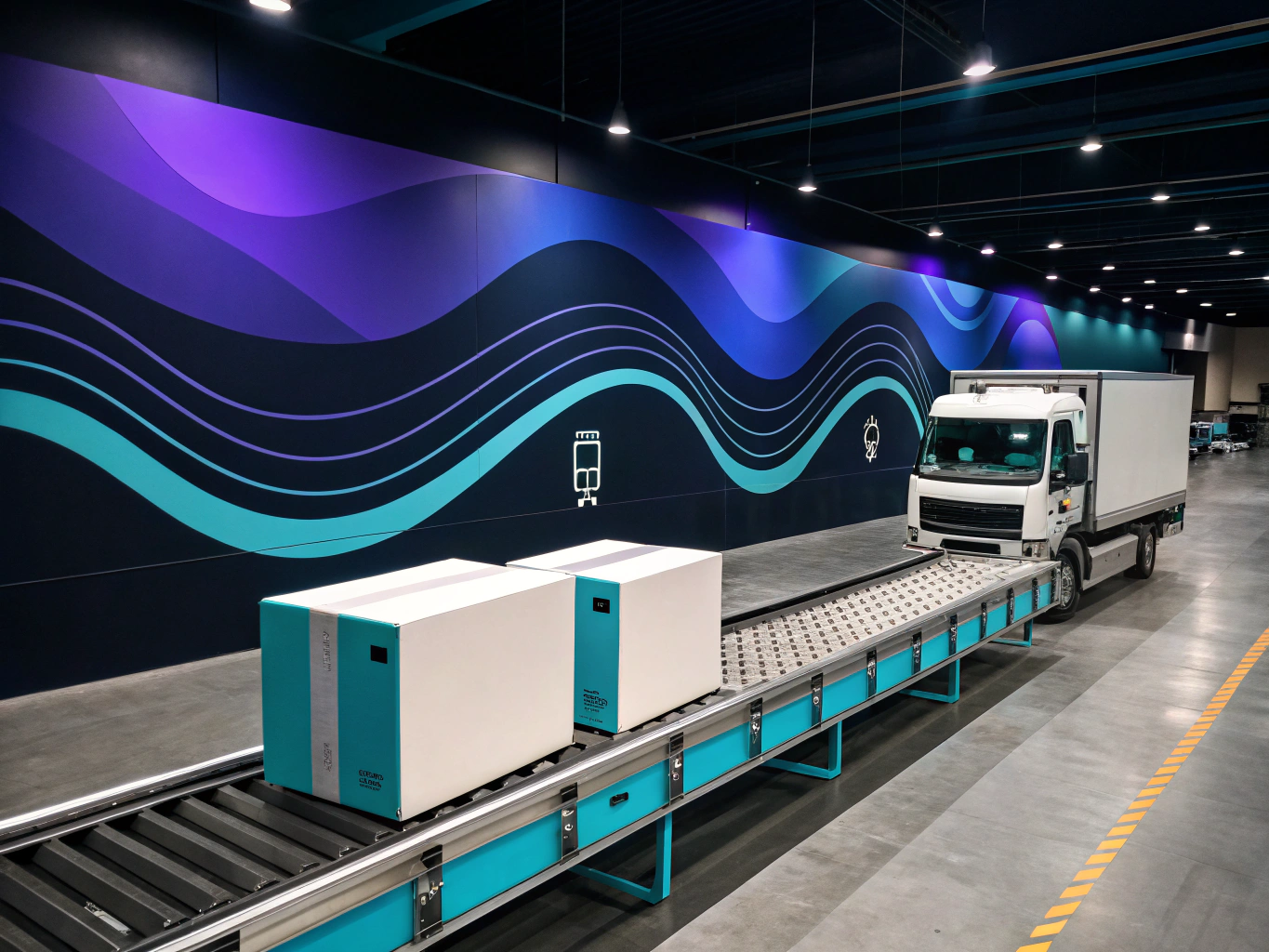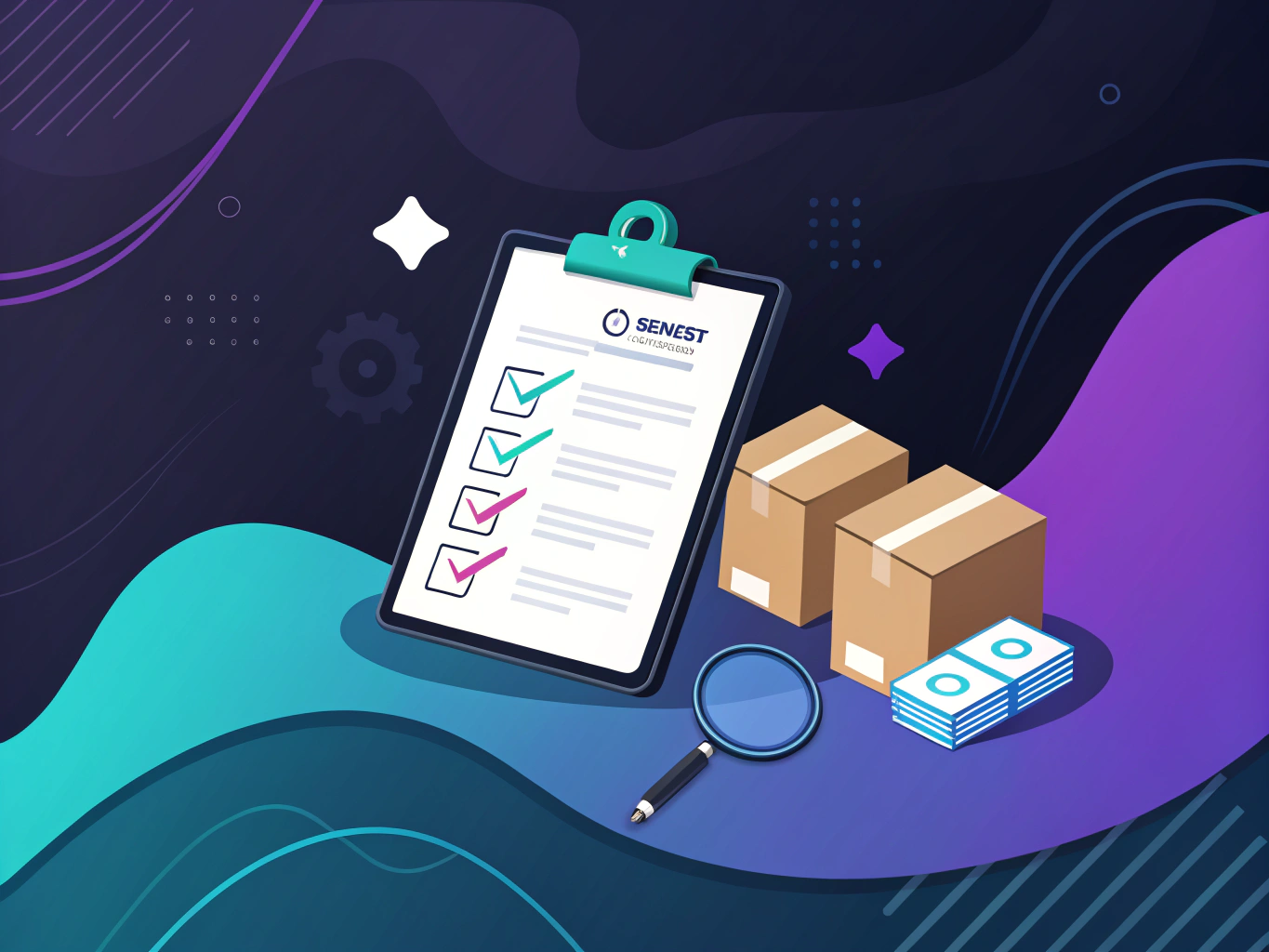Understanding FBM: More Than Just Another Amazon Acronym
The world of e-commerce is swimming in acronyms. FBA, B2B, ROI, CPC… it’s enough to make your head spin. But today, let’s zero in on one that’s causing quite a bit of confusion: FBM. Whether you’re an Amazon seller trying to decide on your fulfillment strategy or just someone trying to decode yet another e-commerce abbreviation, you’ve probably encountered this term.

Here’s the thing: FBM (Fulfilled by Merchant) isn’t just another boring business acronym – it’s actually a fascinating reflection of how e-commerce has evolved. Remember the days when every business had to handle their own shipping? Well, FBM is kind of like that, but with a modern twist.
What Does FBM Actually Mean?

Let’s cut through the jargon: FBM stands for Fulfilled by Merchant. In Amazon-speak, this means you, the seller, are responsible for storing, packing, and shipping products directly to customers. Think of it as being your own warehouse manager, shipping department, and customer service team all rolled into one.
But here’s where it gets interesting – FBM isn’t just about shipping boxes. It’s about maintaining control over your business in a way that Amazon’s more popular FBA (Fulfilled by Amazon) program doesn’t allow. It’s like being a chef who insists on preparing every dish personally instead of letting someone else run the kitchen.
The Evolution of FBM on Amazon
When Amazon first opened its marketplace to third-party sellers, everyone was essentially doing FBM – there wasn’t another option. It was like the Wild West of e-commerce. Then came FBA, and suddenly sellers had a choice: maintain control or hand over the reins to Amazon’s massive fulfillment machine.
But here’s what’s fascinating: despite the convenience of FBA, FBM hasn’t gone away. In fact, for many sellers, it’s become more relevant than ever. Why? Because in a world where everyone’s trying to differentiate themselves, having direct control over your fulfillment process can be a serious advantage.
The Core Components of Amazon FBM
Let’s break down what FBM actually involves, because it’s more complex than just slapping labels on boxes. When you choose FBM, you’re signing up for:
- Complete inventory management (no Amazon warehouses to bail you out)
- Your own shipping operation (including dealing with carriers and rates)
- Customer service handling (yes, those 3 AM “where’s my package?” emails are all yours)
- Quality control from start to finish
FBM vs. FBA: The Real Deal
Now, I know what you’re thinking – why would anyone choose FBM when FBA exists? Well, it’s not as straightforward as it seems. While FBA might feel like having a super-efficient robot army at your disposal, FBM offers advantages that might surprise you:
- Lower fees (no storage costs or fulfillment fees)
- Complete control over inventory
- Flexibility in shipping methods
- Direct customer relationships
The Financial Picture: Breaking Down FBM Costs
Let’s talk money – because at the end of the day, that’s what matters. With FBM, your cost structure looks completely different from FBA. Instead of paying Amazon’s fees, you’re looking at:
- Warehouse space (whether it’s your garage or a rented facility)
- Shipping supplies and costs
- Labor (even if that labor is just you, time is money)
- Software for inventory management
The Technology Behind Successful FBM Operations

Here’s something that often gets overlooked: successful FBM sellers aren’t doing everything manually. They’re using sophisticated tools and systems to compete with Amazon’s automation. We’re talking inventory management software, shipping rate calculators, and customer service platforms that would make a tech geek smile.
Essential Tools for FBM Sellers
The right tech stack can make or break your FBM operation. Think of it as your digital Swiss Army knife – you need tools for:
- Order processing and management
- Inventory tracking and forecasting
- Shipping label generation and tracking
- Customer communication and support
Infrastructure Requirements
Let’s get real about what you need to make FBM work. This isn’t just about having a spare room for inventory – you need a proper setup. Think about:
- Storage space that’s organized and scalable
- Packing stations that are efficient and ergonomic
- Shipping supplies readily available
- A system for tracking everything (because trust me, you’ll need it)
The beauty of FBM is that you can start small and scale up. Maybe you begin in your garage (hello, Jeff Bezos circa 1994), but with the right systems in place, you can grow into a full-fledged fulfillment operation. It’s like building your own mini-Amazon, but with your rules and your vision.
The Human Side of FBM
Here’s something that often gets lost in the FBM vs. FBA debate: the human element. When you’re handling fulfillment yourself, you’re not just moving products – you’re creating direct connections with customers. Every package you ship is an opportunity to make an impression, add a personal touch, or solve a problem in a way that a massive fulfillment center never could.
This direct connection can be especially valuable for brands building a loyal customer base. It’s the difference between being another Amazon listing and being a memorable shopping experience. And in today’s competitive e-commerce landscape, that difference matters more than ever.
Understanding Amazon’s Fulfillment Methods

Let’s be real – when most people hear “FBM,” they either think it’s a new social media platform or some obscure financial term. But for those of us in the e-commerce trenches, FBM (Fulfilled by Merchant) is the backbone of independent selling on Amazon. It’s like being your own mini-Amazon, minus the space rockets and Prime Video shows.
Fulfilled by Merchant (FBM) Deep Dive
Think of FBM as running your own shipping department from your garage (or warehouse, if you’re fancy). Unlike FBA (Fulfilled by Amazon), where Amazon basically adopts your products into their massive fulfillment family, FBM puts you in the driver’s seat. You’re the captain now – handling everything from storage to shipping to customer service.
The infrastructure needed? It ranges from “cardboard boxes in my spare bedroom” to “full-blown warehouse operation.” I’ve seen successful sellers start with just a label printer and determination. But here’s the kicker – as you scale, you’ll need robust inventory management systems, shipping stations, and maybe even a team of packaging ninjas.
FBM vs. FBA: The Showdown
This is where things get interesting. Remember how I said AI is like an intern? Well, FBA is like hiring Amazon as your fulfillment intern – they’re efficient but expensive, and sometimes they put things in weird places. FBM, on the other hand, is like being your own boss – more control, potentially higher profits, but also more headaches.
Cost Structure Breakdown:
- FBA: Higher fees, but includes storage and shipping
- FBM: Lower fees, but you handle all operational costs
- Storage costs: You vs. Amazon’s massive warehouses
- Shipping rates: Your negotiated rates vs. Amazon’s bulk discounts
Managing an FBM Business
Running an FBM operation is like conducting an orchestra – except instead of musicians, you’re coordinating inventory, shipping carriers, and customer service. And sometimes, the timpani section (looking at you, USPS) decides to play their own tune.
Inventory Management That Won’t Make You Cry
I’ve seen enough inventory horror stories to fill a Stephen King novel. The key? Systems. Whether you’re using sophisticated software or a really well-organized spreadsheet (no judgment), you need to know what you have, where it is, and when you need more.
Pro tip: Set reorder points like you set your morning alarm – with plenty of buffer time and maybe a backup just in case. I learned this the hard way after running out of stock during a surprise viral TikTok moment. Not fun explaining to 10,000 potential customers why your “in stock” item isn’t actually in stock.
Shipping and Logistics: The Art of Getting Stuff There
Shipping isn’t just slapping a label on a box and hoping for the best (though some days it feels like it). It’s about optimizing your carrier mix, understanding dimensional weight pricing (aka the “why does it cost $50 to ship this pillow” phenomenon), and maintaining those all-important delivery metrics.
Customer Service That Doesn’t Suck
Here’s where being merchant-fulfilled really shines – or crashes and burns, depending on how you handle it. You’re not just competing with other sellers; you’re competing with the expectation of Amazon-level service. That means:
- Lightning-fast response times (aim for under 24 hours)
- Clear, human communication (no robot speak)
- Problem-solving skills that would make MacGyver proud
FBM Success Strategies

Success in FBM isn’t just about having great products – it’s about building systems that scale. Think of it like creating a well-oiled machine, except this machine needs to handle everything from seasonal spikes to supply chain hiccups.
Best Practices That Actually Work
After years of trial and error (mostly error, let’s be honest), here are some strategies that consistently deliver:
- Batch processing orders at set times during the day
- Using automation tools for repetitive tasks
- Building relationships with multiple suppliers
- Creating standard operating procedures for everything
Common Challenges and How to Crush Them
Every FBM seller faces obstacles. The winners aren’t the ones who avoid problems – they’re the ones who get better at solving them. Common issues include storage space limitations (hello, garage tetris), shipping delays (thanks, weather!), and scaling customer service without losing your mind.
Financial Aspects of FBM
Let’s talk money – because at the end of the day, that’s why we’re all here, right? Understanding your numbers in FBM is crucial. It’s not just about revenue; it’s about knowing your true costs and margins.
The Real Cost of Being Your Own Amazon
Running an FBM operation comes with its own unique cost structure. You’re looking at:
- Storage costs (whether it’s warehouse space or self-storage units)
- Shipping supplies and postage
- Labor costs (even if it’s just valuing your own time)
- Software and tools for management
- Customer service infrastructure
The trick isn’t just knowing these costs – it’s optimizing them without sacrificing quality. I’ve seen sellers try to cut corners on packaging to save money, only to face increased damage rates and unhappy customers. Not worth it.
Managing an FBM Business: The Nitty-Gritty Details

Let’s get real about what it takes to run an FBM operation. After working with hundreds of brands transitioning between fulfillment methods, I’ve seen the good, the bad, and the “why didn’t anyone warn me about this?” moments.
Inventory Management That Won’t Make You Pull Your Hair Out
Remember that scene in I, Robot where Will Smith discovers a warehouse full of robots? That’s what efficient inventory management should feel like – systematic, organized, and slightly sci-fi. But instead of fighting robots, you’re fighting stockouts and overstock situations.
Here’s what successful FBM sellers do differently:
- They use inventory management software that integrates with multiple sales channels
- They maintain buffer stock based on historical sales data, not gut feelings
- They implement barcode systems for accurate tracking (even if they’re small)
- They conduct regular physical inventory counts (yes, still necessary in 2024)
Shipping and Logistics: Where the Rubber Meets the Road
This is where FBM meaning really comes into focus – you’re the captain now. Unlike FBA vs FBM comparisons where Amazon handles shipping, here you’re orchestrating everything. Think of it like being a DJ – you need to mix different carriers, rates, and delivery times to create the perfect shipping symphony.
Pro tip: Don’t put all your eggs in one carrier’s basket. I’ve seen too many FBM sellers get burned when their preferred shipping partner has issues. Build relationships with multiple carriers and keep your options open.
The Customer Service Game in FBM
Customer service in the FBM world is like being a detective, therapist, and problem-solver all rolled into one. Unlike Amazon FBA vs FBM scenarios where Amazon handles customer inquiries, you’re the front line for everything from “where’s my package?” to “this isn’t what I expected.”
Response Time: The New Currency
In my experience running ProductScope AI’s support team, I’ve learned that response time is often more important than the actual solution. Amazon merchant fulfilled sellers who maintain sub-24-hour response times typically see higher customer satisfaction rates, even when dealing with issues.
Looking to enhance your online presence along with your FBM strategies? It’s all about consistency and adapting to customer needs.
Returns and Refunds: The Necessary Evil
Let’s talk about something most fbm Amazon guides skip: returns are going to happen, and they’re going to hurt. But here’s how to make them hurt less:
- Create a clear, documented returns process
- Train your team to spot return fraud (yes, it happens)
- Use return data to improve product listings and reduce future returns
- Consider implementing a restocking fee for non-defective returns
Ever wondered about social media etiquette while managing returns? Both need clarity and respect for the user experience.
Scaling Your FBM Business Without Losing Your Mind
What does FBM mean when you’re ready to scale? It means systems, systems, and more systems. The fbm meaning evolves from “I can handle this myself” to “I need a team and technology to keep up.”
Technology Stack for Growth
Your tech stack should grow with you. Start with:
- Inventory management software
- Shipping automation tools
- Customer service ticket system
- Analytics platform for performance tracking
Curious about the latest tools? Our Amazon Sponsored Brands guide might just offer the insights you need for a competitive edge.
Team Building for FBM Success
The transition from solo operator to team leader is crucial. What does fbm mean for your organizational structure? You’ll need:
- Warehouse staff
- Customer service representatives
- Shipping and logistics coordinators
- Inventory managers
Thinking of expanding your knowledge? Our Jungle Scout Price review can offer insights into market research tools that are essential for scaling.
The Future of FBM: What’s Coming Down the Pike
As someone deep in the AI and ecommerce space, I see some fascinating trends emerging for FBM sellers. The what is FBM question is getting more complex as technology evolves.
Emerging Technologies Reshaping FBM
AI isn’t just for product descriptions anymore. We’re seeing:
- Predictive inventory management systems
- AI-powered customer service chatbots
- Automated shipping rate optimization
- Machine learning for fraud detection
Consider diving into tools like Jungle Scout to stay ahead in product research and competitor analysis.
Market Trends and Opportunities
The Amazon FBM method is evolving. We’re seeing increased interest in:
- Hybrid fulfillment models (mixing FBA and FBM)
- Cross-border FBM opportunities
- Sustainable shipping practices
- Local fulfillment networks
Curious about optimizing your social media strategies? Resetting the Instagram Algorithm might be the breakthrough you need.
Final Thoughts: Is FBM Right for You?
The fbm meaning isn’t just about fulfillment – it’s about control, flexibility, and building a business on your terms. Whether you’re comparing Amazon mfn options or trying to decide between fba vs fbm, remember that there’s no one-size-fits-all solution.
What does FBM mean for your future? That depends on your goals, resources, and willingness to build systems. But one thing’s certain: the future of ecommerce will include multiple fulfillment models, and FBM isn’t going anywhere.
My advice? Start small, build systems, and grow intentionally. The best fulfillment method is the one that works for your business model and goals. And remember, you can always pivot – many successful sellers use both FBA and FBM strategically.
At ProductScope AI, we’ve seen countless sellers succeed with FBM by focusing on what matters: customer experience, efficient operations, and continuous improvement. The tools and technology are there – it’s just about putting them together in a way that works for you.
Ready to take your FBM operation to the next level? Start by auditing your current processes and identifying your biggest pain points. Then, systematically address each one with the right combination of technology, people, and processes. The future of your FBM business is in your hands – make it count.
And if you’re curious about other platforms, explore our guide on Facebook Messenger Guide to see how it can complement your FBM strategy.
Looking for more ways to improve your customer service game? Check out our article on using Facebook Messenger for Business for tips on managing customer queries across platforms.
Don’t miss out on our guide about Facebook Messenger Marketing to enhance your product images and boost sales.
Lastly, if you’re looking to expand your business horizons, consider reading about making money on Amazon for strategic insights and potential opportunities.
👉👉 Create Photos, Videos & Optimized Content in minutes 👈👈
Related Articles:
- Amazon’s Game-Changer: Exploring the Hub Counter and Locker
- Amazon Print on Demand: A Beginner’s Guide to Success
- How Does Shopify Make Money? A Complete Revenue Breakdown
Frequently Asked Questions
What does FBM stand for?
FBM stands for ‘Fulfilled by Merchant’. It is a term used primarily in e-commerce to describe a situation where the seller is responsible for storing, packing, and shipping the products directly to the customer, rather than relying on a third-party service like Amazon’s fulfillment centers.
What does FBM mean in slang?
In slang, FBM can stand for ‘Fine By Me’. It is often used in informal communication to indicate that someone agrees with or is indifferent to a suggestion or situation, expressing that they are okay with whatever decision is made.
What is FBM vs FBA?
FBM (Fulfilled by Merchant) and FBA (Fulfilled by Amazon) are two different fulfillment methods used by sellers on Amazon. With FBM, the seller handles storage, packaging, and shipping of products, while with FBA, Amazon takes care of these logistics through its fulfillment centers, providing advantages like Prime eligibility and Amazon’s customer service.
What is Amazon FBM method?
The Amazon FBM method involves sellers managing their own inventory, shipping, and customer service for orders placed on Amazon. This method gives sellers greater control over their operations, potentially reducing costs associated with Amazon’s fulfillment fees, but also requires more effort in logistics and customer management.
What does FBM mean on Facebook?
On Facebook, FBM can refer to ‘Facebook Messenger’, which is the platform’s messaging service allowing users to communicate with each other through text, voice, and video. It’s a way for users to chat in real-time, share media, and make voice or video calls within the Facebook ecosystem.
About the Author
Vijay Jacob is the founder and chief contributing writer for ProductScope AI focused on storytelling in AI and tech. You can follow him on X and LinkedIn, and ProductScope AI on X and on LinkedIn.
We’re also building a powerful AI Studio for Brands & Creators to sell smarter and faster with AI. With PS Studio you can generate AI Images, AI Videos, Chat and Automate repeat writing with AI Agents that can produce content in your voice and tone all in one place. If you sell on Amazon you can even optimize your Amazon Product Listings or get unique customer insights with PS Optimize.
🎁 Limited time Bonus: I put together an exclusive welcome gift called the “Formula,” which includes all of my free checklists (from SEO to Image Design to content creation at scale), including the top AI agents, and ways to scale your brand & content strategy today. Sign up free to get 200 PS Studio credits on us, and as a bonus, you will receive the “formula” via email as a thank you for your time.
